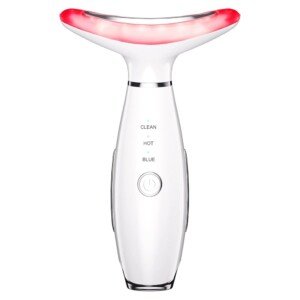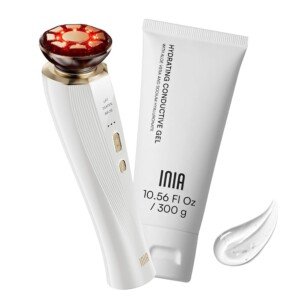In the ever-evolving world of cosmetic enhancements, body contouring technologies continue to push the boundaries of non-invasive and minimally invasive treatments. As we enter 2025, advancements in science and innovation promise more effective, safer, and faster solutions for fat reduction, skin tightening, and muscle toning. But what’s the truth behind these cutting-edge treatments? Are they worth the hype, or do they come with hidden drawbacks? Here’s a deep dive into the top body contouring technologies of 2025 and what you should know before considering them.
1. Advanced Cryolipolysis 2.0
Cryolipolysis (popularized by CoolSculpting) has been a go-to for non-surgical fat freezing. The 2025 upgrade, Cryolipolysis 2.0, boasts:
- Faster results: Treatment times reduced from 60 to 30 minutes per session.
- Better fat reduction: Up to 35% more fat loss with adjustable cooling intensities.
- Reduced risk of PAH (Paradoxical Adipose Hyperplasia): A rare but concerning side effect where fat grows instead of shrinking—mitigated through smarter temperature control.
The Truth: While more efficient, patients must undergo multiple sessions for optimal results, and not every body responds the same way. Maintaining results still requires a healthy lifestyle.
2. AI-Powered Laser Lipo (Laser-Assisted Lipolysis)
Laser lipolysis isn’t new, but AI-powered laser devices now offer unmatched precision:
- Personalized fat targeting: AI scans body composition and adjusts laser strength in real time.
- Simultaneous skin tightening: Collagen stimulation improves elasticity post-treatment.
- Less downtime: Only 24-48 hours of recovery compared to traditional lipo.
The Truth: It’s more expensive than older lasers and still requires minor anesthesia. Results are noticeable after one session but may take weeks to fully develop.
3. HIFEM + Radiofrequency Synergy (EMSCULPT NEO 2.0)
EMSCULPT, known for building muscle while burning fat, has evolved into EMSCULPT NEO 2.0, merging:
- High-Intensity Focused Electromagnetic (HIFEM) technology – Triggers supramaximal muscle contractions.
- Radiofrequency (RF) heating – Melts fat while tightening skin.
- 20% more efficient: Claimed to burn 30% fat and increase 25% muscle mass in four sessions.
The Truth: While it works well for toning, those with higher body fat may need additional fat-reduction treatments first. Not a replacement for weight loss.
4. Injectable Fat Reduction (Kybella & Next-Gen Alternatives)
Kybella (deoxycholic acid) has been used for chin fat, but 2025’s injectables now target larger areas like the abdomen and thighs. New formulations include:
- Lipodissolve Ultra: A blend of phosphatidylcholine and faster-acting enzymes.
- Reduced swelling: Earlier versions caused significant downtime; new versions minimize it.
The Truth: Multiple sessions are necessary, and results vary. Best for small, stubborn fat pockets—not for significant weight loss.
5. Non-Surgical Skin Tightening Breakthroughs
Loose skin after weight loss or aging has been a hurdle, but new nanotechnology-based skin tightening treatments offer:
- Focused ultrasound waves (UltraSkin™) – Stimulate deep collagen without surgery.
- Micro-needling with RF + Nanobots – Tiny robotic devices enhance collagen pathways.
The Truth: Dramatic skin tightening still requires surgical options (like a tummy tuck), but these can improve mild-to-moderate sagging.
The Bottom Line: Are 2025’s Body Contouring Technologies Worth It?
The latest body contouring advancements make fat reduction, muscle sculpting, and skin tightening more accessible than ever. Yet, key truths remain:
✔ No technology replaces diet and exercise – They enhance, not transform.
✔ Multiple sessions are almost always needed – Patience is crucial.
✔ Not everyone is an ideal candidate – Consult a certified practitioner.
In 2025, contouring tech is smarter and safer, but realistic expectations and expert guidance are essential to achieving the best results.
Would you try any of these treatments? Let us know in the comments!
Disclaimer: Always consult a licensed medical professional before undergoing any body contouring procedure. Results may vary based on individual factors.
-
2025 New Face and Neck Massager Tool, 7 Colors LED Womens Skin Care Facial Massager for Skin Rejuvenation, Lifting, Toning, Glow Boost-White
Original price was: $29.99.$24.99Current price is: $24.99. -
3-in-1 Beauty Massager for Face and Neck, Based on Triple Action LED, Thermal, and Vibration Technologies for Skin Care,Improve,Firm,Tightening and Smooth
Original price was: $23.96.$21.96Current price is: $21.96. -
3-in-1 Red Light Therapy for Face and Neck, Skin Tightening Device True Beauty Glow Facial Massager for Skin Care, Effective Wrinkle Reduction Anti-Aging with Lifting,…
Original price was: $139.99.$109.99Current price is: $109.99.









